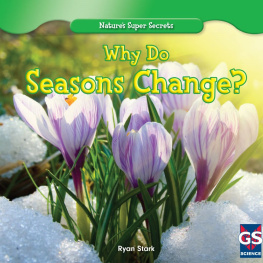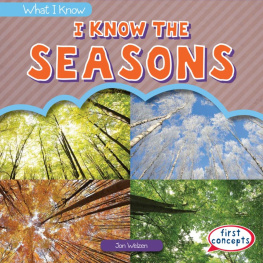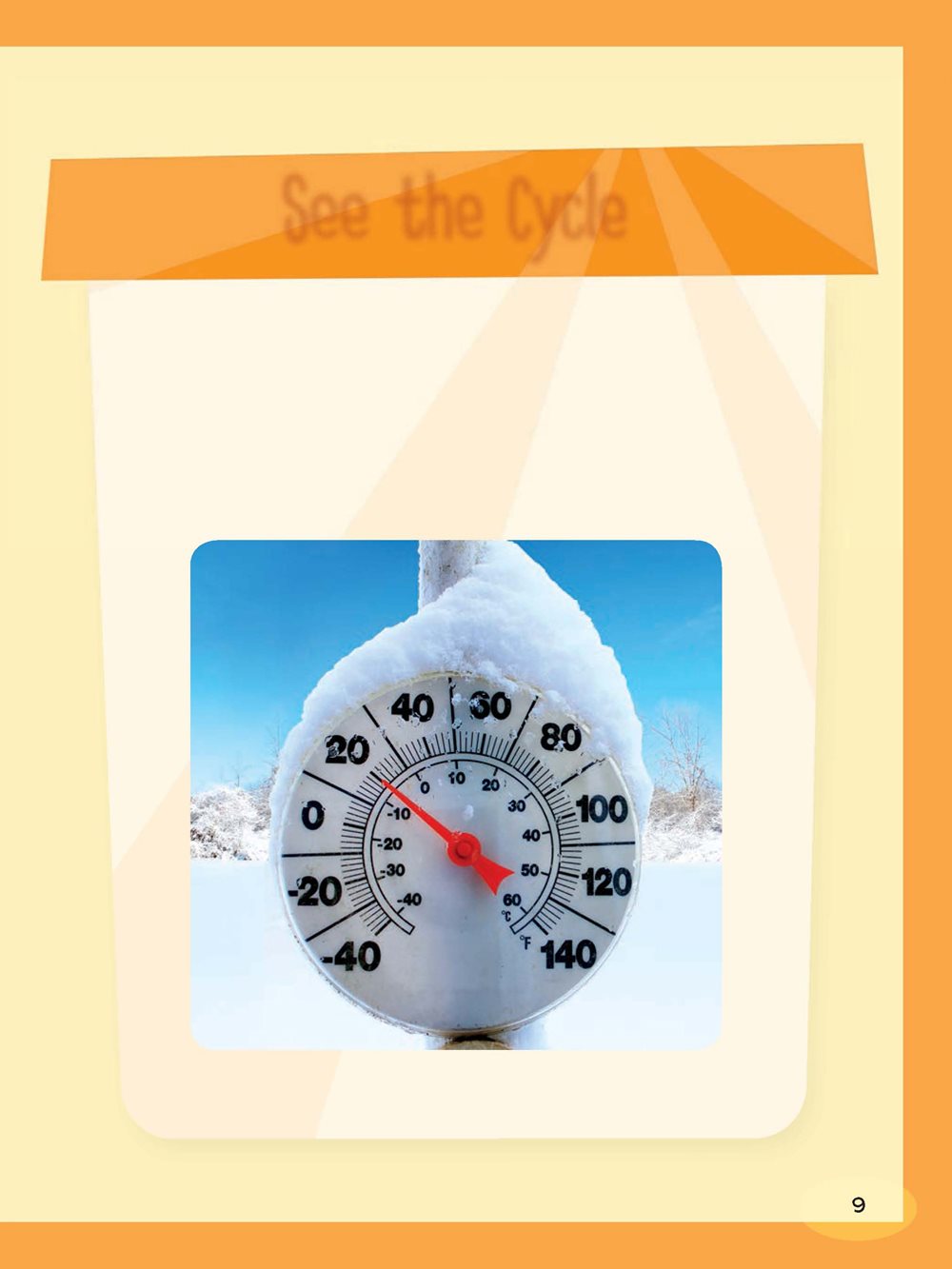Investigating
Seasons
Orlin Richard
Copyright 2016 by Lerner Publishing Group, Inc.
Content Consultant: Alan Robock, Distinguished Professor of Environmental Sciences,
Rutgers University
All rights reserved. International copyright secured. No part of this book may be
reproduced, stored in a retrieval system, or transmitted in any form or by any means
electronic, mechanical, photocopying, recording, or otherwisewithout the prior written
permission of Lerner Publishing Group, Inc., except for the inclusion of brief quotations in
an acknowledged review.
Lerner Publications Company
A division of Lerner Publishing Group, Inc.
241 First Avenue North
Minneapolis, MN 55401 USA
For reading levels and more information, look up this title
at www.lernerbooks.com.
Library of Congress Cataloging-in-Publication Data
Richard, Orlin, author.
Investigating seasons / by Orlin Richard.
pages cm (Searchlight books. What are earths cycles?)
Audience: Ages 811
Audience: Grades 4 to 6
ISBN 978-1-4677-8059-9 (lb : alk. paper) ISBN 978-1-4677-8339-2 (pb : alk.
paper) ISBN 978-1-4677-8340-8 (eb pdf)
1. SeasonsJuvenile literature. 2. Earth (Planet)RotationJuvenile literature.
I. Title. II. Series: Searchlight books. What are earths cycles?
QB637.4.R528 2015
508.2dc23 2015000962
Manufactured in the United States of America
1 VP 7/15/15
Contents
WHAT IS A
SEASON?
WHAT CAUSES
THE SEASONS?
Chapter
WHAT IS A
SEASON?
In many parts of the world,
people swim in lakes during
summer. And they ice- skate on
those same lakes during winter. But
they cannot ice- skate in the summer,
and they would
not want to swim
in the winter. Why
is the weather
so different during
summer and winter?
The same lakes people skate on in the winter
turn to liquid water in the summer all
thanks to Earths cycles. What is a cycle?
These changes
happen because
of Earths seasonal
cycle. The natural
world has many
different cycles.
A cycle is a pattern
that repeats
over time in a
predictable way.
A boy jumps into a lake
on a hot summer day.
Measuring the Seasons
What is a season? We think of summer as warm and
winter as cold. But suppose there is a warm day in
winter. That does not mean it is summer! The seasons
begin and end on specific dates. These dates are
based on the position of the sun and Earth. This is the
astronomical definition of seasons.
It takes 365.24 days, or
about one year, for Earth to
make one trip around the sun.
A METEOROLOGIST TAKES A READING OF
WEATHER- SENSING EQUIPMENT.
But not everyone measures the seasons in this way.
Meteorologists are scientists who study the weather.
They base seasons on the temperature at different
times of year. This system does not depend on the suns
position. It depends more on the climate, or long- term
weather patterns.
Opposite Seasons
To complicate things further, seasons are different
depending on where you live. The Northern and Southern
Hemispheres have opposite seasons. Winter happens
from about December through February in the Northern
Hemisphere. Meanwhile, those months are summer in
the Southern Hemisphere.
Earths seasons affect agriculture and climate. They
can even affect health. But why are there seasons at all?
What exactly causes a season?
Because of the seasons, this
farmer must harvest his crops
at a certain time of year.
See the Cycle
Look up the average temperatures for your
hometown. Make a chart showing the
temperature for each month of the year.
How much does the temperature change
between summer and winter?
Chapter
WHAT CAUSES
THE SEASONS?
Some people think the seasons
change based on how close
Earth is to the sun. But that is not
true. In fact, Earth is closest to the
sun in early January. That is the middle
of winter in the Northern Hemisphere.
Hot summer days are not
a result of Earths distance
from the sun. What does
cause summers heat and
winters chill?
The seasons are actually caused by the tilt of
Earths axis. Imagine a line through Earth. It goes from
the North Pole to the South Pole. This is Earths axis.
But the axis is not straight up and down. It is tilted
23.45 degrees as Earth orbits around the sun.
This globe shows the
tilt of Earths axis.
23.45
Stronger Sunlight
Earths tilt means different amounts of sunlight fall on
different places. For example, Earths northern half
is tilted toward the sun for part of the year. So the
northern half gets more sunlight during this time. The
extra sunlight warms the Northern Hemisphere more,
making it summer.
The United States is in the
Northern Hemisphere. Its warmest
months are June through August.
At the same time, the Southern Hemisphere is tilted
away from the sun. This hemisphere gets less sunlight,
making it winter. Later, the seasons switch. Earth moves
to the other side of the sun. But the tilt of Earths axis
does not change. That means the Southern Hemisphere
gets more sunlight during the other half of the year.
People relax on a beach in Australia. This country
is in the Southern Hemisphere, so its warmest
months are December through February.


























